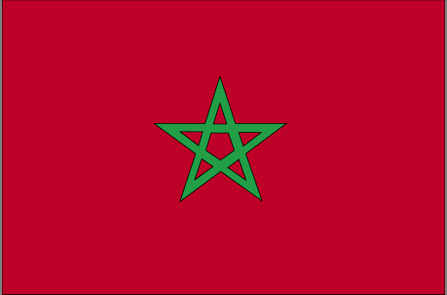To help inspire or plan your trip to Morocco, some of its major attractions
for travellers are shown below, including some of the best natural, historical, cultural and adventure sites in the country.
These include all of UNESCO World Heritage Sites for Morocco which represent the best
of the world's cultural and natural heritage.
Click on the icons below to focus on specific types of features
(click again to return to all).
|
|
|
|
|
|
|
|
|
|
|
|
 |
|---|---|---|---|---|---|---|---|---|---|---|---|
| Natural | History | Wildlife | Trekking | Cities | Religious Monument | Boat Journey | Rail Journey | Diving | Cultural | Adrenaline | UNESCO WHS |
Cultural attractions in Morocco
| Merzouga Sand Sea | |
|---|---|
The Merzouga Sand Sea lies on the edge of the Sahara Desert in eastern Morocco, near the small Berber village of Merzouga. This vast area of sand dunes makes for a breathtaking landscape, particularly at sunrise or sunset. The best way to experience this region is to take a camel ride to a camp in the desert and sleep under the stars enjoying traditional Moroccan food and hospitality. | |
| Draa Valley | |
|---|---|
The Draa Valley is a fertile stretch of land along the Draa River as it flows from the High Atlas Mountains to the Sahara between the Anti Atlas and Jebel Sarhro mountain ranges. The valley is lined with palm groves, kasbahs and ksars (fortified villages) with a number of interesting destinations on the way. The ksar at Tamnougalt is one of the most impressive in the valley. The oasis at Zagora is known as 'The Gate of the Desert', lying at the edge of the Sahara - it claims to be 42 camel days to Timbuktu. The village of Tinfou lies on the edge of the vast Saharan sand dunes, where a camel trek will give you a taste of the desert life. | |
| Anti Atlas Mountains | |
|---|---|
The Anti-Atlas Mountains lie to the south of the High Atlas Mountains and the Sous River. The region provides the rugged mountain scenery, lush valleys and oases and traditional villages also seen in the High Atlas but it is a region much less visited by tourists making for a more isolated and authentic setting. The area offers excellent trekking opportunities, with various grades of circuits including climbing the peaks of Jebel Aklim at 2,531 metres and Jebel Lekst at 2,359 metres. There are numerous traditional Berber villages in the mountains which can be visited on foot or by vehicle and offer insights into rural Berber life. | |

